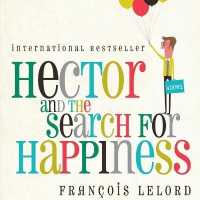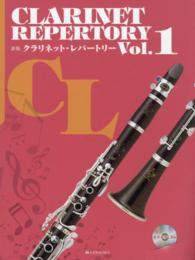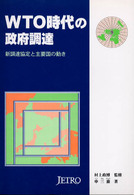- ホーム
- > 洋書
- > 英文書
- > Philosophy
Full Description
This work by Lithuania's most important philosopher Vasily Sesemann (1884-1963) is a European classic. Having been published in Lithuanian for the first time in 1970 (though written much earlier) it has now finally become accessible to an international public. Sesemann's Aesthetics is not only an extremely useful introduction to the discipline of aesthetics; it also engages in stimulating analyses of a whole range of subjects that remain of interest for the contemporary reader. Sesemann explains in a clear and systematic way almost all problems linked to aesthetic production and perception, providing inquiries into, for example, philosophical problems of space, tectonicity in architecture, and film. Sesemann's personal philosophical vision of aesthetic experience as well as of the ambiguity of aesthetic form makes this book a must for specialists in German and Eastern European interwar philosophy as well as in Russian Formalism. At the same time, it is an inspiring source for all people who are interested in art, its interpretation, and the relation between aesthetics and art history.
Thorsten Botz-Bornstein, the author of Vasily Sesemann: Experience, Formalism, and the Question of Being (Amsterdam/New York: Rodopi, 2006)
Contents
Leonidas DONSKIS: Editor's Introduction: Mapping Inter-War Lithuanian Philosophy
Acknowledgments
Part I: Introduction
1. Aesthetics: Definition and Object
2. Difficulties for Aesthetics
3. Immediate Aesthetic Perception—the Material Basis of Aesthetics
Part II: Methods
1. The Optimal Starting Point: Nature or Art?
2. Three Starting Points for Aesthetic Analysis
Part III: The Analysis of an Aesthetic Object
1. The Essential Properties of Aesthetic Perception
2. The Internal Structure of an Aesthetic Object
3. The Expressiveness of an Aesthetic Object and its Objective Sense
4. Aesthetic Form and Aesthetic Structure
Part IV: The Beauty of Nature
1. The Relations of Natural and Artistic Beauty with Respect to Origin
2. The Aesthetic Criterion of Natural and Artistic Beauty is the Same
3. The Conception of Nature's Beauty in The History of European Culture. The Beauty of Wild Nature
4. The Beauty of Organic Forms
5. Human Beauty. Its Ideal
6. Organic Beauty and the Sexual Instinct
7. Beauty and Ugliness. Their Relation in Art
8. The Peculiarity of Natural Beauty
Part V: The Origin of Art
1. The Relation of Primitive Art to Other Areas of Culture
2. Attempts to Derive the Origin of Art from General Psychological Principles. Criticism
3. Stimuli for the Emergence of Representational Art
4. The Origin of Music
5. General Conclusions
6. The Artist and the Child (Primitive Man)
Part VI: The Problem of Artistic Creativity
1. A General Characterization of the Creative Process
2. The Creative Process: Three Basic Moments
3. Creative Imagination
Part VII: The Historic Development of Art and the Factors Underlying it
1. The Problem: Formulation and Explication
2. Taine's "Milieu Theory" and its Critical Appraisal
3. The Psychological Theory of "Numbing" and its Critique
4. The Relation of the Artist's Individuality and Creativity to the Cultural Environment
5. The Relation of the Development of Art to General Cultural Development
6. The Historical Changing of Styles and the Theories Explaining it
Part VIII: The Relations of Beauty to other Cultural Values. The Role of Art in Cultural Life
1. Introduction
2. Beauty and Morality
3. Art (Beauty) and Truth
Part IX: Historical Survey of Aesthetic Theories
1. The Aesthetics of the Ancient Greeks
2. Rationalist Aesthetics in France and Germany
3. The Empiricist Aesthetics of the English
4. The Aesthetics of Kant
5. Vico
6. German Idealist Aesthetics: Schelling, Hegel, Schopenhauer
7. The Formalists. Fechner
8. Contemporary Aesthetic Theories
Part X: The Classification of Types of Art
1. The Problem
2. The Relation of the Art Work to the Subject. Optical and Acoustic Impressions: Their Difference
3. Spatial and Nonspatial Forms of Art
4. Objective and Nonobjective Forms of Art
5. Representational and Nonrepresentational Art
Notes
Index








